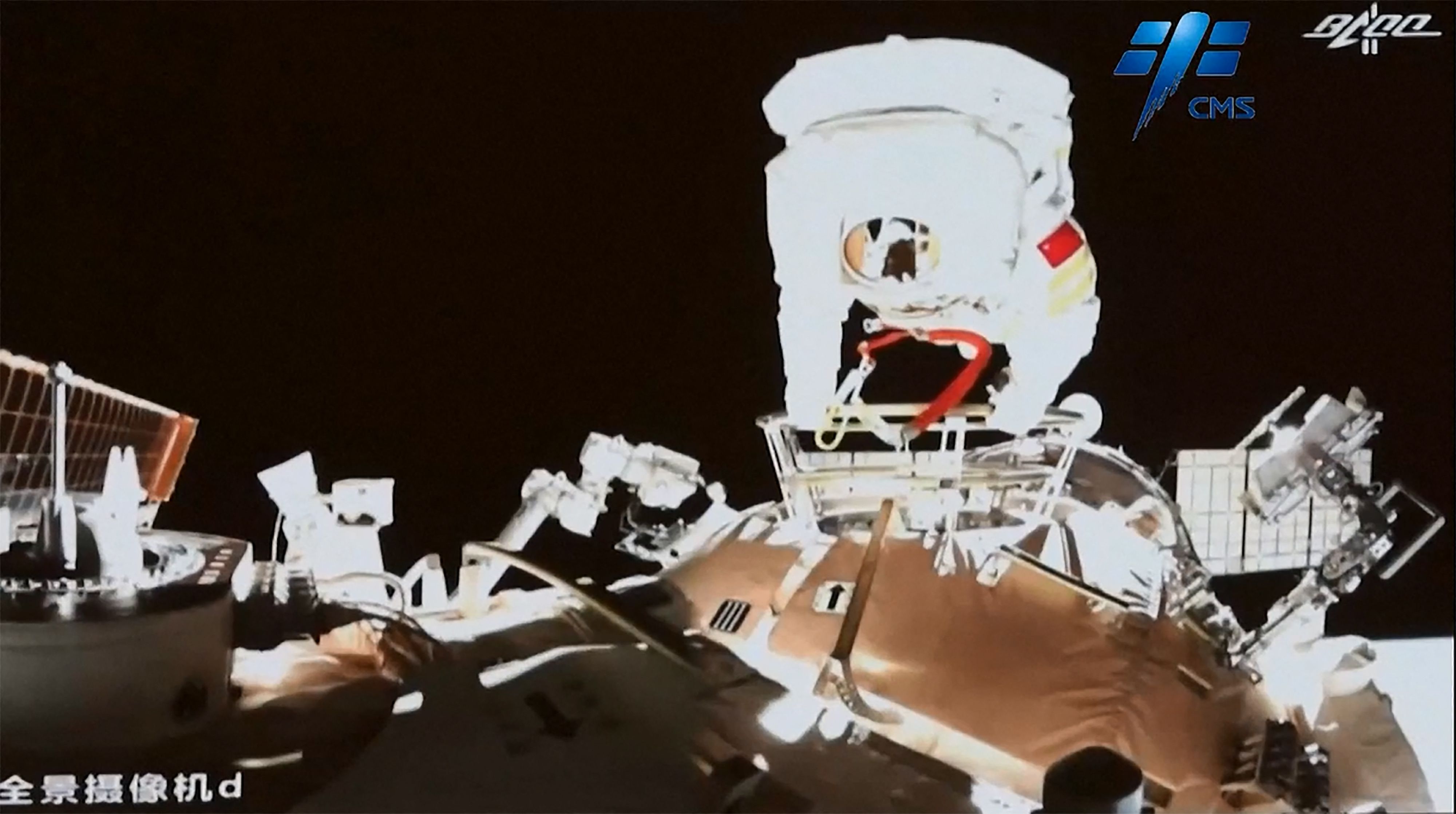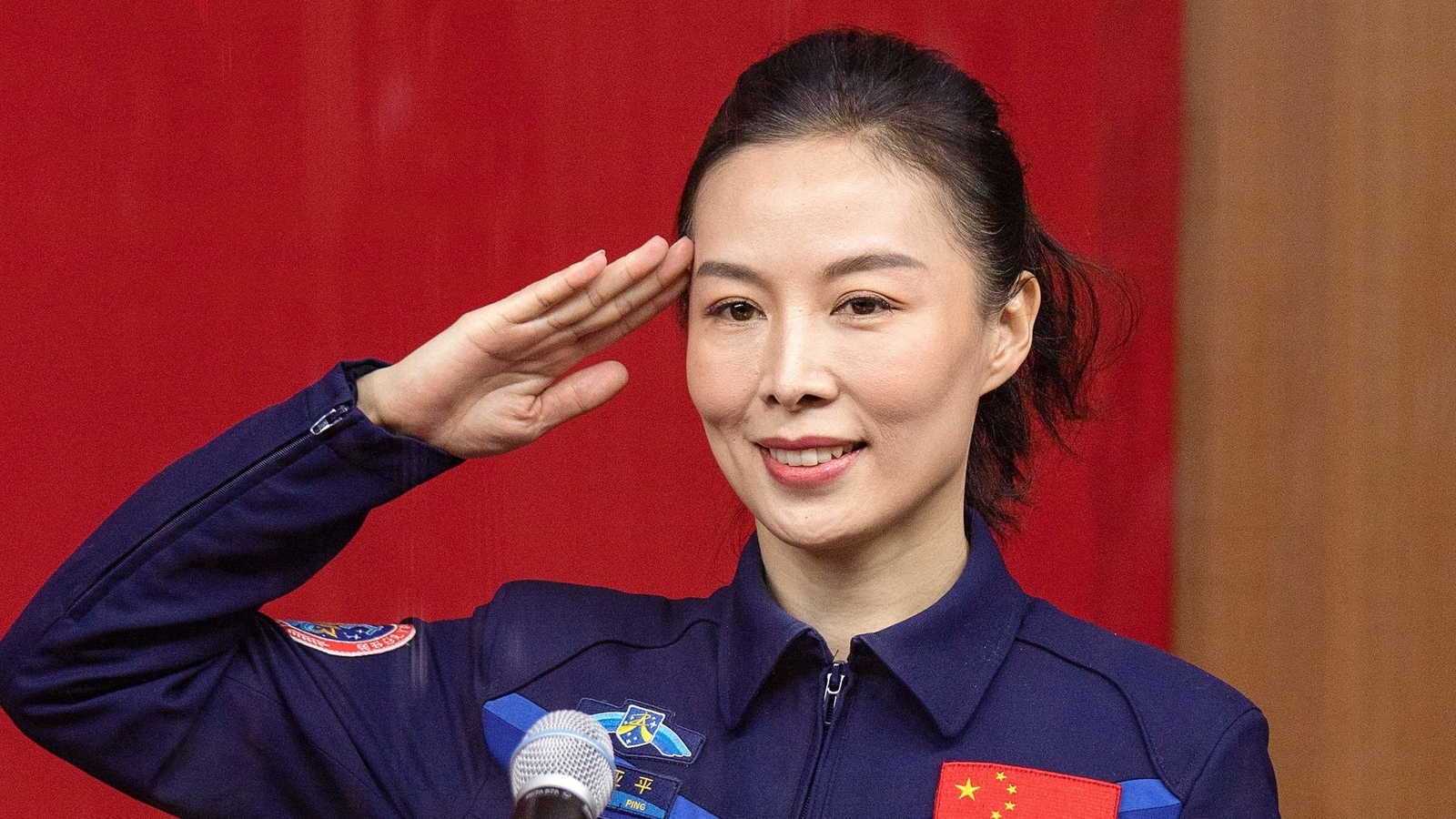Shenzhou-13 spaceship astronauts conduct 2nd spacewalk to build Tiangong space station
Two crew members of China’s Shenzhou-13 spaceship have entered open space for the second time to carry out works for the construction of the country’s own orbital station, Tiangong.
Two crew members of China’s Shenzhou-13 spaceship have entered open space for the second time to carry out works for the construction of the country’s own orbital station, Tiangong as on Sunday. As was the case during the first Shenzhou-13 spacewalk on November 7, two crew members will exit the spacecraft while another one will be coordinating their work from inside, according to Sputnik.
The current crew of Shenzhou-13 spaceship includes Commander Zhai Zhigang and first-time mission astronaut Ye Guangfu, as well as Wang Yaping, the first female astronaut to board the Chinese orbital station. They have been at Tiangong since October 16 for a six-month mission.
Further, Zhai Zhigang and Ye Guangfu will venture outside of the core module Tianhe. At the same time, their female teammate Wang Yaping will remain in the cabin to support their operations, according to China Manned Space Engineering Office (CMSEO).
Earlier, the team performed their first Extra-Vehicular Activities (EVA) on November 7, which lasted for about 6.5 hours, according to China Global Television Network.
China began building its own space station in April. Construction works are scheduled to end in 2022, according to Sputnik.
Chinese astronauts give science lesson from space station
BEIJING (AP) — Chinese astronauts on Thursday beamed back a science lesson from the country’s under-construction space station.
The lecture focused on physics, aiming to illustrate how the weightless environment affects buoyancy, the movement of objects and optics.
Students from five cities, including Beijing and the semi-autonomous region of Hong Kong, peppered the astronauts with questions about living conditions in space and were treated to a virtual tour of the station. The event was also open to the public through a livestream.
Wang Yaping, the only woman aboard the station, served as the main instructor, while Ye Guangfu assisted and commander-in-chief Zhai Zhigang worked the camera. Wang had taught a similar lesson while aboard one of China’s earlier experimental stations in 2013.
The three arrived at the station in October for a six-month stay, charged mainly with preparing the main Tianhe module for the arrival of two additional modules named Mengtian and Wentian ahead of completion by the end of next year.
Wang last month became the first Chinese woman to conduct a spacewalk when she and Zhai spent six hours outside the module to install equipment and carry out tests alongside the station’s robotic service arm.
Chinese astronaut Wang Yaping became the first Chinese woman to conduct a spacewalk: Check Photo below

This screen grab made from video released by Chinese state broadcaster CCTV shows Chinese astronaut Wang Yaping stepping outside China’s Tiangong space station in orbit around Earth on November 7, 2021. (AFP)
Their Shenzhou-13 mission is China’s longest since it first put a human in space in 2003, becoming only the third country to do so after Russia and the U.S.
The three are the second crew on the permanent station, which upon completion will weigh about 66 tons, much smaller than the International Space Station, which launched its first module in 1998 and weighs around 450 tons.
Along with installing equipment in preparation for the station’s expansion, the crew is assessing living conditions in the Tianhe module and conducting experiments in space medicine and other areas.
China’s space program was barred from the International Space Station, mainly due to U.S. concerns over its intimate military connections.
China has also pushed ahead with un-crewed missions, and its lunar exploration program generated media buzz this week when its Yutu 2 rover sent back pictures of what was described by some as a “mystery hut, but was most likely only a rock of some sort.
The rover is the first to be placed on the little-explored far side of the moon, while China’s Chang’e 5 probe returned lunar rocks to Earth for the first time since the 1970s last December. A Chinese rover, meanwhile, is searching for evidence of life on Mars.
The program has also drawn controversy. In October, China’s Foreign Ministry brushed-off a report that China had tested a hypersonic missile two months earlier, saying it had merely tested whether a new spacecraft could be reused.
China is also reportedly developing a highly secretive space plan
For all the latest Technology News Click Here

